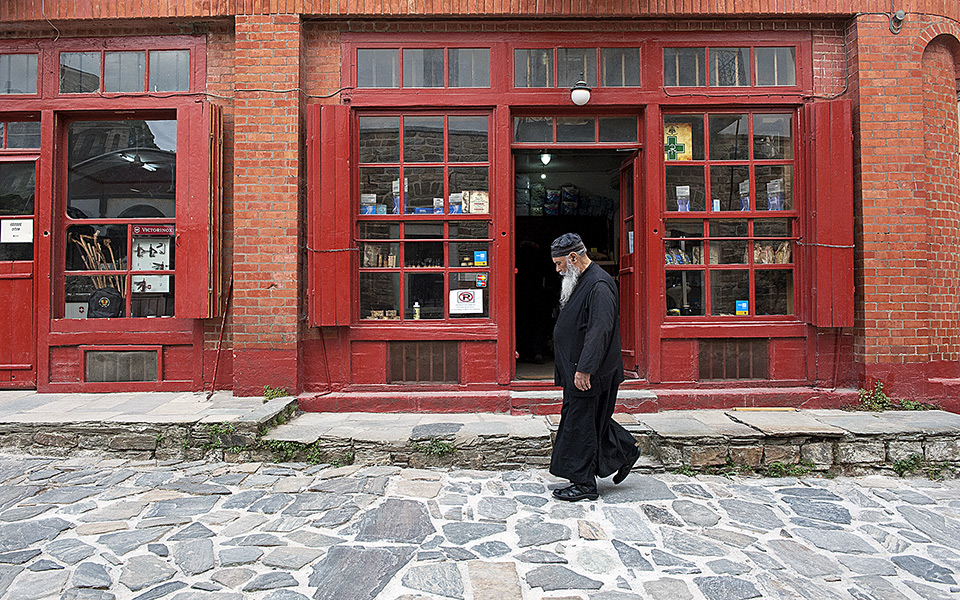Nikos Makridis starts his day when the sun rises. By seven in the morning, his restaurant, which he has been running for 25 years, must be ready to open and offer meals. Pilgrims from the monasteries will start arriving and want a bite to eat before boarding the 10 am bus for the port of Daphne, from where they’ll sail away back to modern life. By the time the restaurant doors open, Karyes Square is full of life. Pilgrims with backpacks on their shoulders and walking sticks in hand come and go from the shops in search of souvenirs – knotted bracelets; Byzantine icons and crosses; holy wine; Russian vodka; American bourbon; local sausages and more.
The bus leaves, only to return three hours later with newly-arrived pilgrims who soon disperse into the cloisters and cells of the monasteries where, for a few days or maybe longer, they’ll enjoy traditional Athonite hospitality. After this daily morning-time hustle and bustle, peace and tranquility return to the tiny urban center of the monastic state.
There are 50 or so monks who reside permanently in the “city” of Karyes on Mount Athos. Mount Athos enjoys international autonomy and its own constitution, but the miniature state’s reach goes far beyond its borders, extending to the entire Orthodox Christian world and beyond.
Laid out amidst the beech and chestnut trees on the slopes of the eastern side of the peninsula, Karyes overlooks the north Aegean. The town boasts a small urban center of administrative buildings, the dwellings of 19 monks and many shops which hire monks and pilgrims from the monasteries or the community in order to operate as businesses.
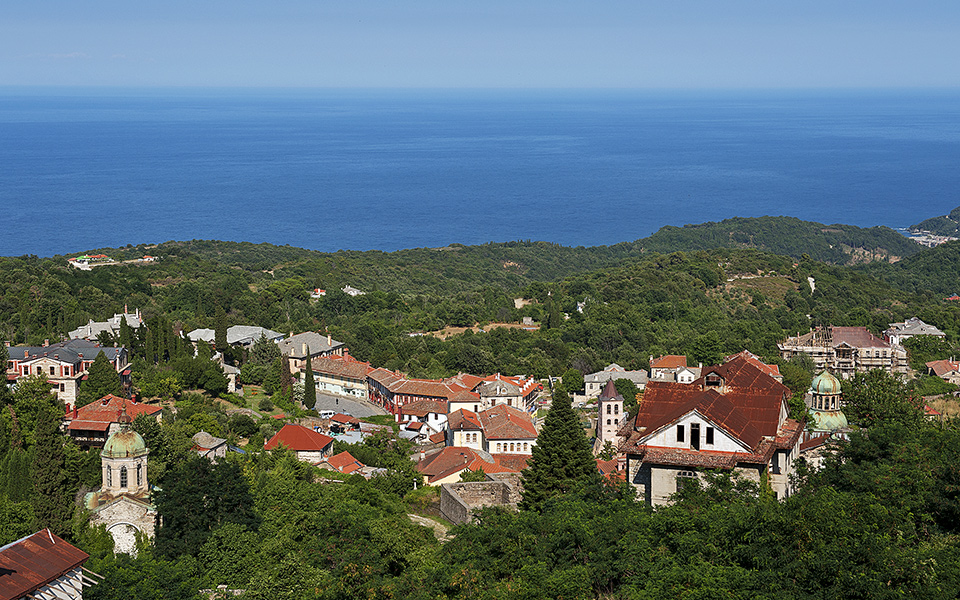
© Alexandros Avramidis
In the center of Karyes stands the building that houses the all-powerful parliament and government of Mount Athos – the Holy Community and the Holy Supervision. Between them, they decide everything concerning the state of Athos. Opposite them is the famous Church of the Protaton, with frescoes by Panselinos, which holds the most important relic of Mount Athos, the image of Our Lady of Axion Esti. A little further along the street can be found the office of the Civil Governor, who is responsible for public order and safety and for the implementation of the rule of law throughout the peninsula.
For all the residents, everyday life starts at sunrise and ends at sunset, when, as required by the rules of the Athonite society, all activity ceases and the monks retire to their monasteries and their cells, to pray and to rest after a day of chores and labor. Karyes empties as the sun sets, and visitors are asked to respect the time of quiet and contemplation which comes with the darkness.
Early in the morning, life starts up again. Again, the buses come and go. More than 200,000 people a year pass through this tiny hub, even if briefly, to worship in the monasteries of Mount Athos, celebrities as well as ordinary men.
Kings, princes, patriarchs and global leaders have strolled across Karyes Square, embraced the image of “Our Lady of Axion Esti” and enjoyed the traditional treat of raki and loukoumia (turkish delights) in the lobby of the Holy Community. Some of the better-known visitors include George Bush Sr., Colin Powell, Jacques Delors, Viktor Yushchenko and his successor Viktor Yanukovych, Vladimir Putin, Prince Charles and Greek presidents and prime ministers, not the mention the late Slobodan Milosevic and the descendants of the House of Romanov.
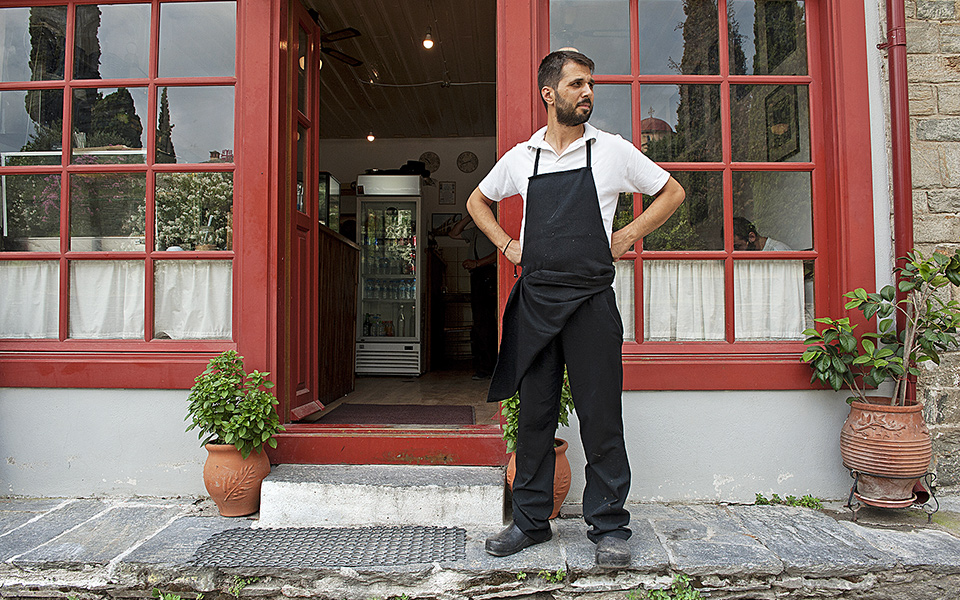
© Alexandros Avramidis
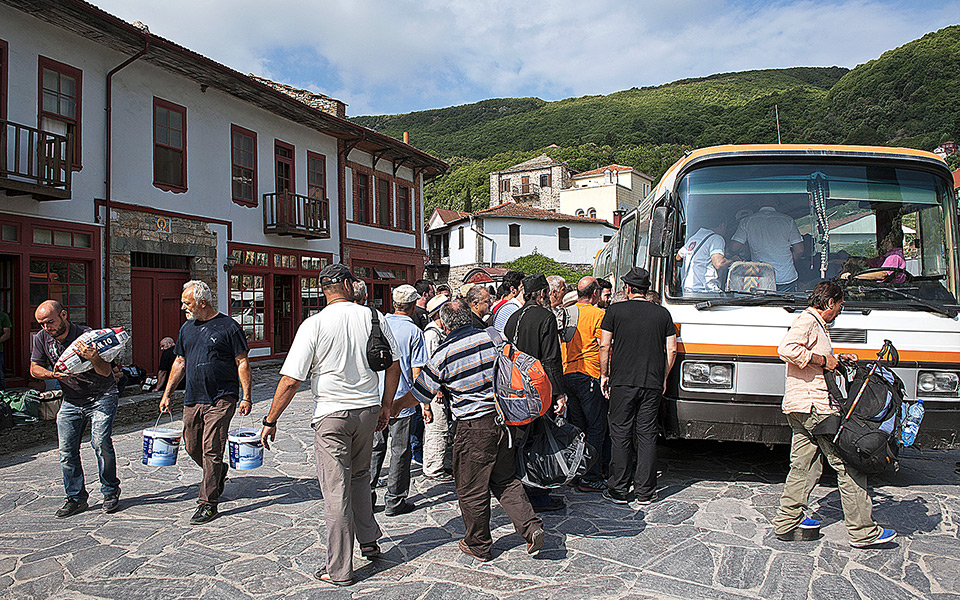
© Alexandros Avramidis
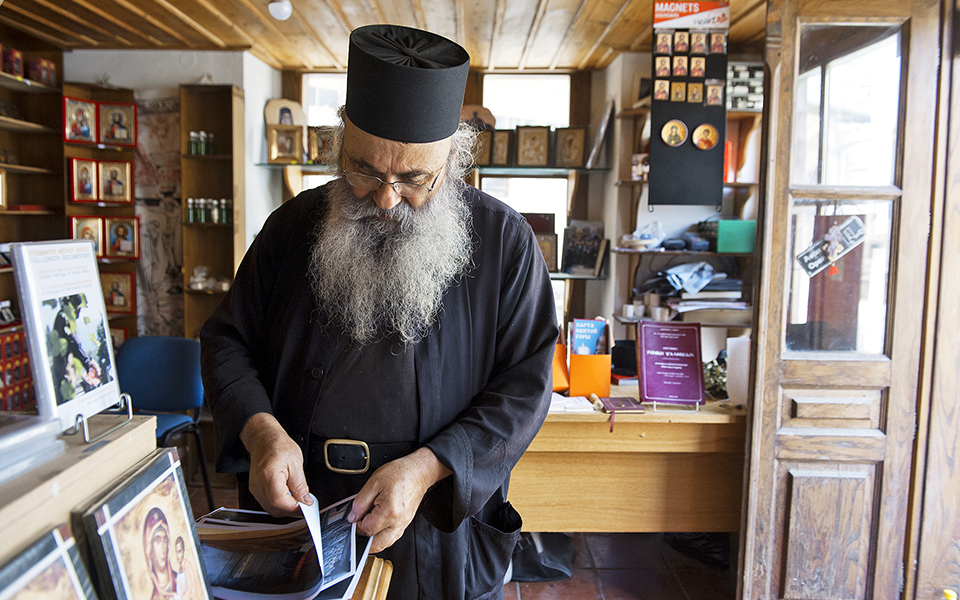
© Alexandros Avramidis
With such a volume of visitors, it’s only natural that, even in a place as holy as this, the rules of business apply just as they do in the capitalist world outside. On the main street of Karyes, there are over 20 shops selling everything imaginable. While turnover remains high, a monk that runs one of the stores did that the crisis was being felt here, too.
Dimitris, from Ierissos, opened a sandwich shop on the square; apart from sandwiches, pies and croissants, he also serves cappuccino freddo, which, he says outsells traditional coffee, and with the permission of the Holy Community, he operates two taxis as well.
A little further along is Makridis and his Karyes Restaurant, which he leased from the Zografou Monastery. A hotel with four rooms operates above it. “I work until eight in the evening, then close everything. I cook meat for visitors only when it’s not a day of fasting and I pay normal tax, but not VAT,” he said.
Naturally, there is also a medical clinic as well as a pharmacy and a bank. Pharmacist Spyros Barakos hails from Monastiraki Vonitsa and has worked on Mount Athos for the last 25 years.
“I read in a classified ad that a pharmacist was needed in Karyes and I called the number to learn more. I was told to come and take over the business before some Russian did! And that’s how I came here.”
The conversation with him reveals some other, lesser known aspects of Athonite society. “Medicine related to treatments for narcotics and alcohol abuse are very much in demand. People with substance dependencies come here in the hopes that the monks will help them with the problem. Also, uninsured people come to the monastery to get free medication,” he says.
Eight doctors offer their services in the health center. “Generally, monks are a healthy lot. Their complaints are usually arthritis or back pain due to manual work, or varicose veins and phlebitis due to standing on vigils,” says Dr Stamatis Karasoulos.
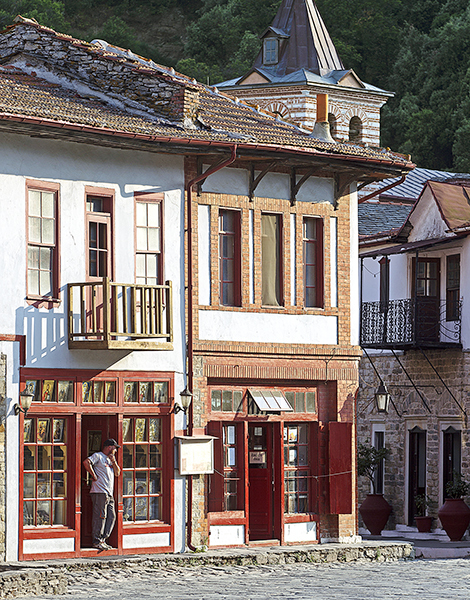
© Alexandros Avramidis
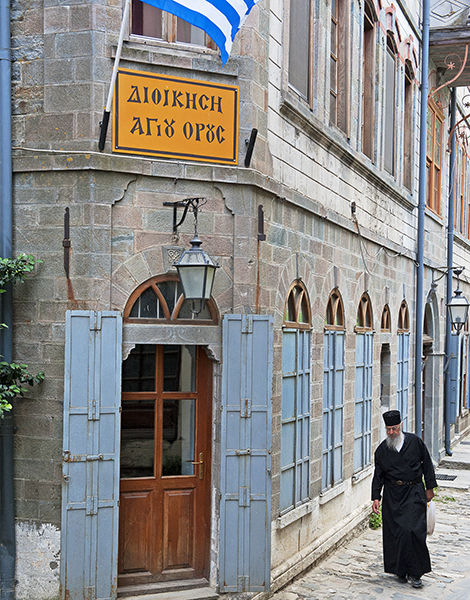
© Alexandros Avramidis
A health center is understandable, but where does the bank fit in with the image of this holy place, guardian of Orthodox Christianity? “Except for loans, we do everything,” says the head of the Karyes branch of the Piraeus Bank, Elias Chatziangelou. “We pay out pensions to the monks and to visitors, who for whatever reason might be staying at the monastery for long periods of time. We do other things as well, such as distributing NSRF funds for restorations.” It’s not necessarily a sign of cosmopolitanism or recent change. The struggle between the spiritual and the secular is eternal, after all, and the laws of the market have always applied in Karyes. Banks have existed here in past centuries, too.
“Since the closing decades of the 19th century, the Athonite capital has been full of life and its markets always busy. The inevitable consequence, the influx of merchants, shoppers, visitors, the noisy presence of which, in the inns and restaurants of Karyes, caused great concern and, in a letter from Patriarch Ioakim III, it was requested of the Holy Community that the center be closed.’ (Ioannis Hatzifotis, “Mount Athos Notebooks”).
In this perpetual tug of war between secularism and spirituality, Athonite society seems to be holding up fine. Many, however, are worried. In a recent statement, Phaidon Hadjiantoniou, a former architect of KEDAK (the center for the study and preservation of the monuments of Athos) and a man with deep understanding of the affairs of the holy peninsula, said:
“Today, with the challenges of globalization and the global breakneck pace of technological revolution, it is imperative to preserve the quieter character of life on Mount Athos. Protaton is an eminently emblematic place where the spiritual and daily needs of the mountain converge. But at the same time, it is also the place most exposed to the challenges of the outside world. The redefinition of the uses [of properties] in the square and its surrounding area, which will occur after proper analysis and assessment, will help maintain the collective Athonite memory, which is something that is already a goal of the Holy Community. “

